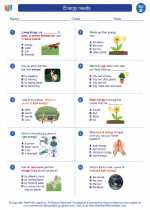Tundra
The tundra is a cold, treeless biome found in the Arctic and high mountain regions. It has a harsh climate with low temperatures and a short growing season. The tundra is characterized by permafrost, which is a layer of permanently frozen soil.
Climate
The tundra has a cold and dry climate. The average temperature in the tundra is below freezing for much of the year, and the growing season is short, lasting only a few months. The tundra also experiences strong winds and low precipitation.
Flora and Fauna
Due to the harsh climate, the tundra is home to a limited variety of plant and animal species. Some of the common plants found in the tundra include mosses, lichens, grasses, and small shrubs. Animals such as caribou, musk oxen, Arctic foxes, and polar bears are adapted to the cold conditions of the tundra.
Environmental Impact
The tundra is a fragile ecosystem that is sensitive to human impact and climate change. Oil and gas exploration, as well as industrial development, can disrupt the delicate balance of the tundra. Climate change is also causing the permafrost to thaw, leading to changes in the landscape and impacting the wildlife that depends on the tundra for survival.
Study Tips
- Learn about the adaptations of plants and animals in the tundra to survive in the harsh climate.
- Understand the role of permafrost in the tundra ecosystem.
- Explore the impact of human activity and climate change on the tundra.
[Tundra] Related Worksheets and Study Guides:
.◂Science Worksheets and Study Guides Second Grade. Energy needs

 Worksheet/Answer key
Worksheet/Answer key
 Worksheet/Answer key
Worksheet/Answer key
 Worksheet/Answer key
Worksheet/Answer key
